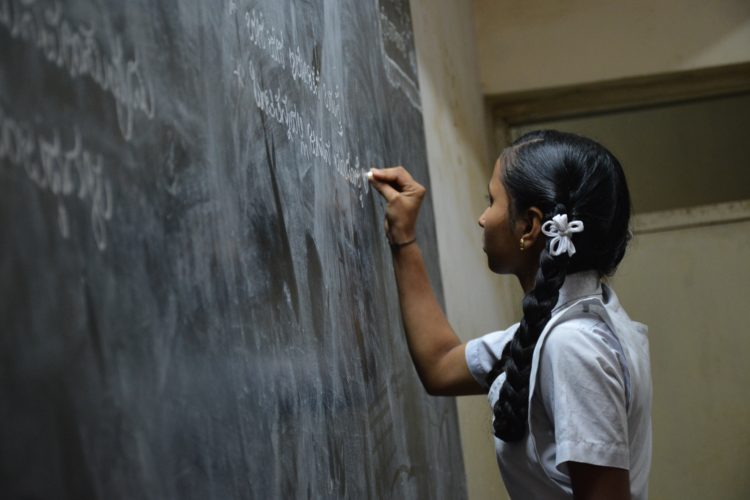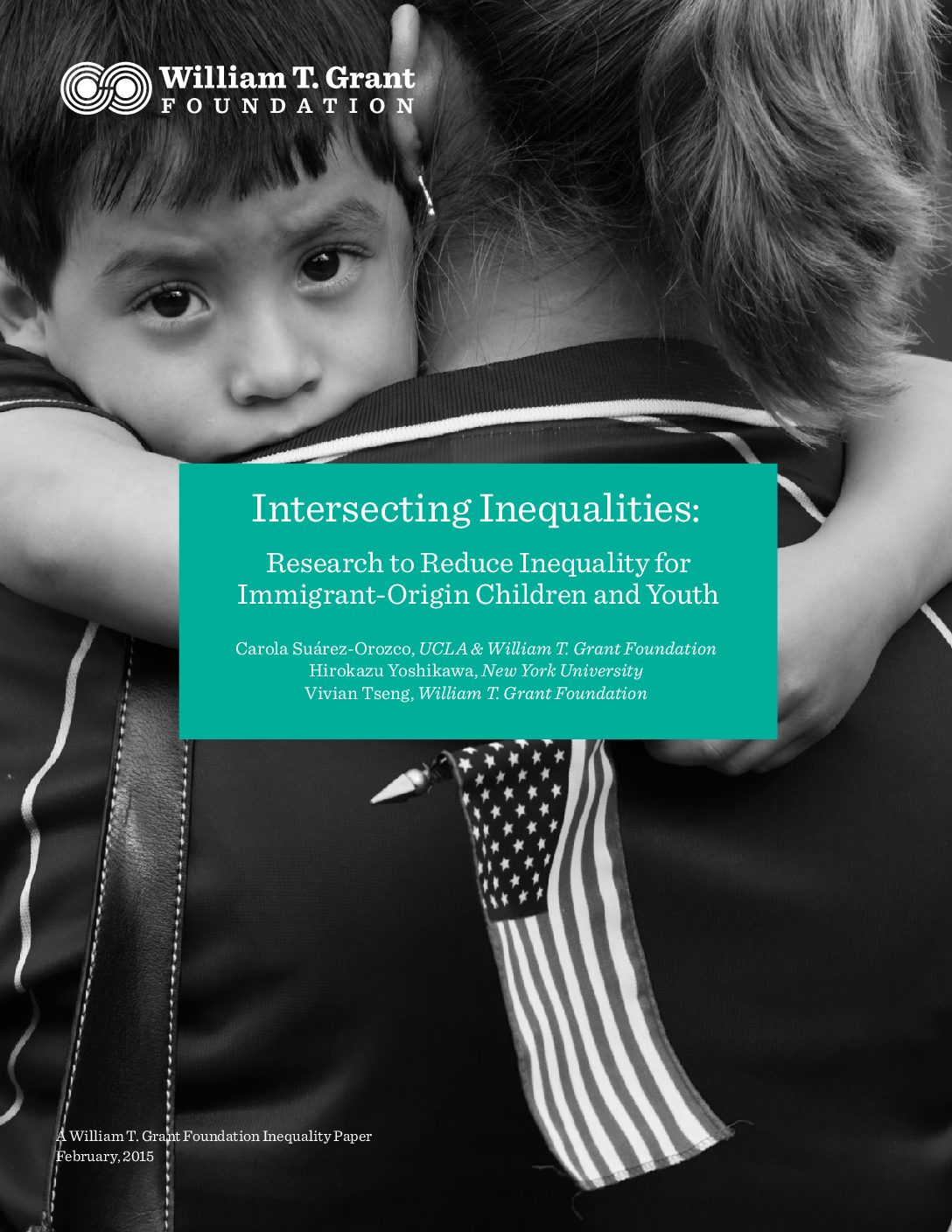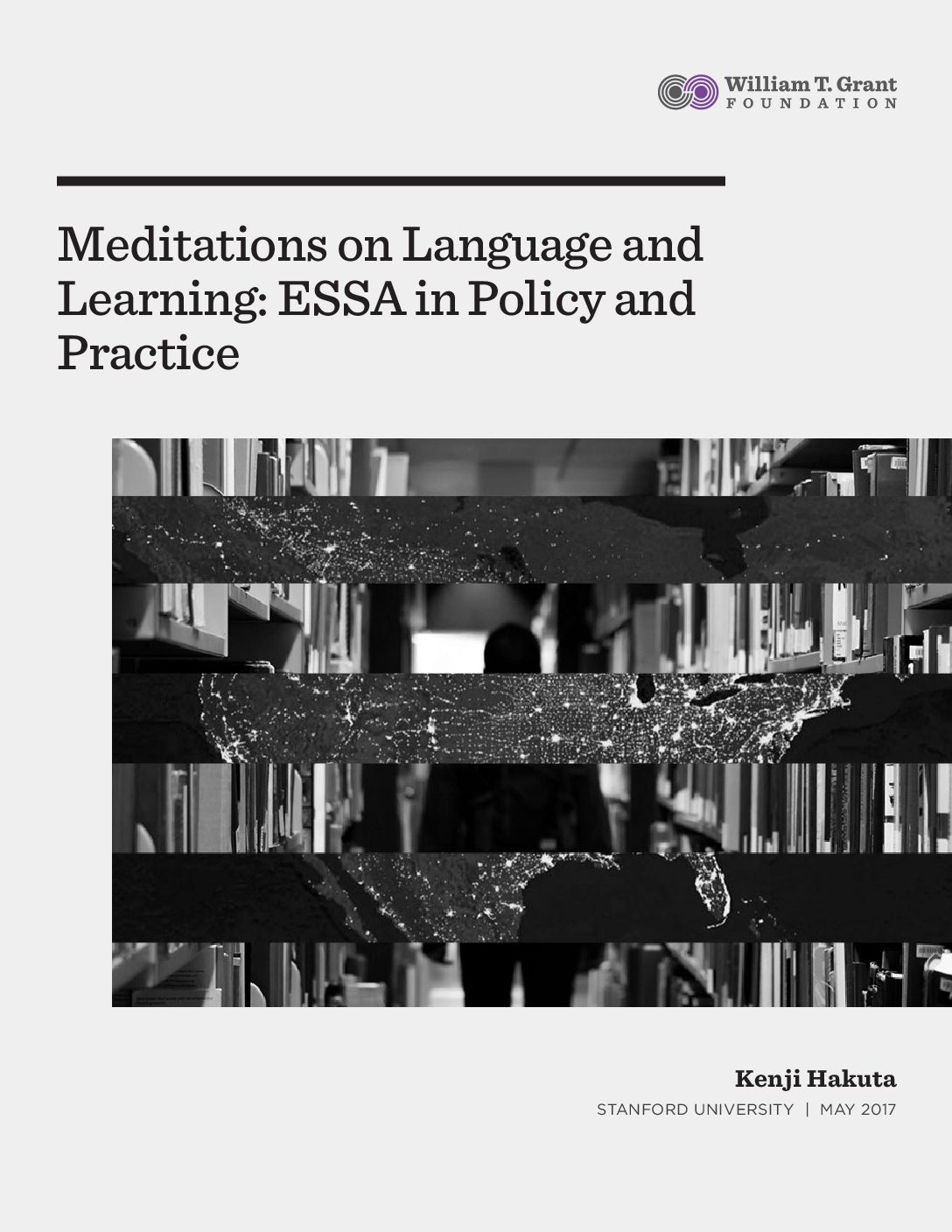By merging school accountability for English language proficiency into the big arena of Title I and academic learning, the Every Student Succeeds Act represents a structural change in how policy treats the relationship between language development and academic learning. As with any policy change, the expectation is that this will help transform practice for the better, and improve learning opportunities for English Learners. Education researchers, then, have an obligation to document and test these expectations, not only with regard to the relationship between policy and practice, but its implications for adult actions and student learning.1
What is at stake?
As an academic psycholinguist who has engaged for many years with education policymakers and practitioners in trying to improve the learning prospects of English Learners, I would argue that the integrity of the lens through which state and local systems view the whole student is at stake. Researchers, just as much as policymakers, are guilty of separating human nature into discrete components in order to target and deepen our work. For researchers, this is illustrated in the pursuit of disciplinary rigor at the expense of interdisciplinary and problem-oriented research. While a targeted, specialized approach may work in detailed theory-building, it works against the interest of the whole student. For policymakers, on the other hand, this is illustrated in the “supplement-not-supplant” funding mentality for categorical programs, like those for English learners. Language is a transcendental quality that pervades almost every aspect of human nature, but past policy violated this view by treating it as a distinct component.
Second language development is a process that unfolds over a long time, and is driven by a multitude of learner characteristics.
In my opinion, ESSA brings about changes that reconcile some of these contradictions. As we approach policy changes that present important opportunities for researchers, I would like to share some “meditations” about language, as well as the worlds of education policy and practice, which I have repeated to myself over the years as I’ve worked in these areas:
- Language is a major representational system of the human mind.
- Language engages with a broad range of the human spirit beyond cognition—awareness, emotion, and social activity.
- Second language development is a process that unfolds over a long time, and is driven by a multitude of learner characteristics.
- Language is not an end in and of itself; it develops when given purpose.
- In the educational system, accountability matters: it drives the ways in which institutions allocate resources and make decisions.
- Educators work best in collaborative environments, but are segregated into bureaucratic policy structures, such as “mainstream teachers” and “ESL/bilingual teachers.”
Where can researchers focus?
In 2010, I launched an initiative called “Understanding Language” with my practitioner collaborator and much-celebrated educational leader Maria Santos, joined by many researchers, practitioners, and policymakers concerned about the new standards around equity for English learners. We focused on the Common Core State Standards and Next Generation Science Standards, and the ways that they illuminated the language demands inherent in the practice standards.

As part of this work, we noted a discrepancy between language expectations and the sorts of language supports that were being provided to ELs during instructional time designated for English language development. We encouraged systems to give English learners greater agency in the process of language development—to shift the focus from the structural aspects of language to how it is used in disciplinary learning (CCSSO, 2012). This shift has led to changes in many state English language proficiency standards toward Common Core practices, and has yielded the realization that the implementation of such standards would require major shifts in instructional practice and the collaborative culture of instruction. Ultimately, ESSA has enabled these shifts.
As these changes are implemented, what role is there for researchers? What can we learn? One can imagine a range of research questions that focus on learning and instruction, local district implementation, or state policy implementation, to name only a few areas.
Learning and Instruction
At the level of learning and instruction, ESSA will comprise new ways of integrating academic language development into content instruction, while at the same time retaining some amount of designated attention to English language development (ELD)—a notion that is commonly referred to by the shorthand “integrated and designated ELD.” What are appropriate materials and teacher capacities that can advance both language and academic learning in English Learners, and how might that vary depending on the individual characteristics of the students (newcomers, long-term English Learners, students with disabilities, etc.)? What are collaborative structures that enable teachers to address integrated and designated ELD needs most effectively?
Local District Implementation
At the level of local district implementation, what are the types of local assessment tools and practices that can help direct attention to improving and monitoring student uses of language in academic learning? For example, what kinds of professional development and system improvement opportunities are most effective in supporting schools identified for targeted assistance for ELs?
State Policy Implementation
At the state level, ESSA specifies important parameters for accountability, yet provides states leeway in how those parameters are addressed. In addition to integrating language with human cognition, it allows for the important drivers of English language proficiency progress to be taken into account (particularly initial proficiency and time in the U.S.). It also allows for the long-term nature of the process of second language development by allowing exited former EL students to be included in the subgroup of EL accountability for academic indicators for up to 4 years. In addition, the law enables states to determine other accountability parameters, such as its minimum sample size, which would determine how visible a school is on the radar screen of the state-determined accountability system.

Conclusion
In many ways, ESSA creates a technical puzzle to be solved by 50 individual states, which could easily provide 50 different solutions, effectively resulting in 50 experiments that can be empirically explored. The natural variation among states and districts makes for a great research environment—a veritable “Pasteur’s Quadrant” for building basic knowledge within a real policy and practice context. Exploration of the variation in how states implement their state plans provides a real opportunity to learn about the behaviors of policies, as well as how they influence practice and, ultimately, student learning.


















